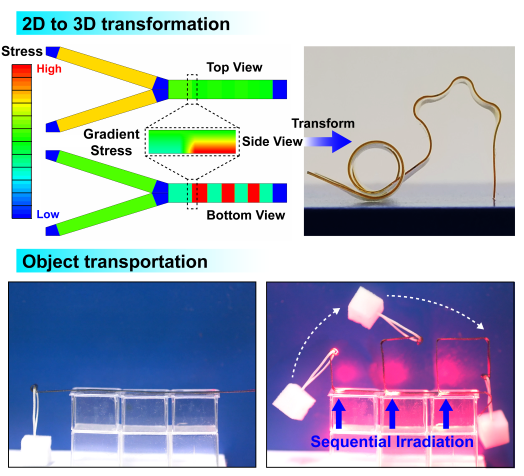Cheng Liu, Yizheng Tan, Chaowei He, Shaobo Ji, and Huaping Xu
Adv. Mater., 2021, 33, 2105194.
Programming 2D sheets to form 3D shapes is significant for flexible electronics, soft robots, and biomedical devices. Stress regulation is one of the most used methods, during which external force is usually needed to keep the stress, leading to complex processing setups. Here, by introducing dynamic diselenide bonds into shape-memory materials, unconstrained shape programming with light is achieved. The material could hold and release internal stress by themselves through the shape-memory effect, simplifying programming setups. The fixed stress could be relaxed by light to form stress gradients, leading to out-of-plane deformations through asymmetric contractions. Benefiting from the variability of light irradiation, complex 3D configurations can be obtained conveniently from 2D polymer sheets. Besides, remotely controlled “4D assembly” and actuation, including object transportation and self-lifting, can be achieved by sequential deformation. Taking advantage of the high spatial resolution of light, this material can also produce 3D microscopic patterns. The light-induced stress gradients significantly simplify 3D shape programming procedures with improved resolution and complexity and have great potential in soft robots, smart actuators, and anti-counterfeiting techniques.

